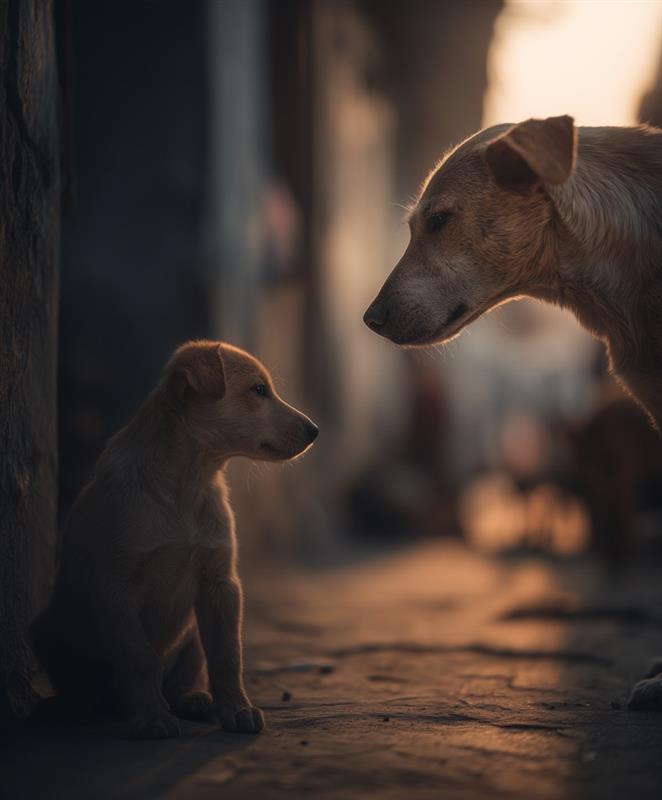
BEST PRACTISES FOR HOUSES WITH MORE THAN ONE PET
One is good , two is better and many make it a full blow party . The best part of a multi-pet household in India is the companionship and joyful energy that multiple pets bring—not just to each other, but to the entire family. In Indian settings, where families often spend a lot of time together at home, having multiple pets means there’s always laughter, play, and a sense of constant, loving activity.
There are many pros and cons to having multiple pets.
Pros
- Extra Companionship: Your pets keep each other company, especially when family members are out for work, reducing separation anxiety for all.
- Double the Love: Each pet comes with its own charm—imagine the fun of two dogs chasing each other, or your cat snuggling with your rabbit.
- Improved Socialization: Pets teach each other boundaries and keep one another engaged, reducing boredom-related mischief.
- Family Bonding: With more animals, your household learns valuable lessons in compassion and cooperation.
Cons
- Space Constraints: Many Indian homes, especially city flats, are small. Limited space can amplify territorial conflict and stress among pets.
- Housing Societies & Rules: Gaining acceptance in Indian apartments and gated communities can be tough. RWAs (Resident Welfare Associations) may set restrictions like muzzling dogs in parks or limit the number of pets allowed.
- Cost Management: Caring for multiple pets multiplies expenses. Average monthly costs per pet range from ₹1,500 to ₹10,000 for basics, but can easily go higher with premium food, vet visits, and boarding. Emergency or chronic medical treatments add an unpredictable financial layer.
- Access to Quality Veterinary Care: Metro cities like Chennai, Mumbai, and Bangalore have 24/7 veterinary hospitals, home visits, and teleconsultations. In smaller towns, access may be limited to government clinics with fewer services, or you rely on online platforms.
- Pet-Friendly Travel and Boarding: Pet-friendly hotels, cafés, and reputable boarding centres are scarce, especially outside major metros. Inspect any boarding centre carefully before leaving your pets, as standards and expertise can vary widely.
- Cleaning and Hygiene: Multiple pets in humid Indian climates mean frequent grooming, surface cleaning, and pest control to avoid ticks and infections.
What to Look Out For (India-Specific)
-
Compatibility and Socialization:
- Indian homes often combine dogs and cats, or small mammals and birds—choose species and breeds that don’t have aggressive territorial traits.
- Introduce new pets slowly, and always supervise the first few meetings.
-
Space and Comfort:
- Create dedicated corners for feeding, rest, and litter (especially critical in small flats).
- Invest in vertical space—pet shelves for cats, kennels for dogs, and safe cages for birds.
-
Legal and Community Rules:
- Check society by-laws before bringing in new pets; rules on breed, number, and access can differ sharply across cities.
- Train pets to behave well in common areas; prevent dog barking and pet messes in lifts and walkways.
-
Health and Medical Emergencies:
- Know the nearest 24/7 vet (if in a metro) and keep contact details handy.
- Use online vet consultations if living in a smaller city. Vaccinate and regularly deworm all pets to prevent cross-species infections.
-
Budgeting and Planning:
- Track annual vet exams (₹1,000–₹4,000 each), grooming (₹500–₹2,000 per session), and monthly pet food bills (₹1,500–₹5,000 per pet).
- Consider pet insurance—costs in India range from ₹800–₹3,000 annually, and may help in emergencies.
-
Community and Social Life:
- Identify pet-friendly parks and cafes—many in metros but rare elsewhere.
- Expect questions from neighbors; be proactive in addressing concerns about safety, hygiene, and noise.
Final Thoughts
Indian homes are embracing multi-pet families, but success depends on careful preparation. Space, cost, training, and community awareness are key. Wherever you live—an independent house in Tamil Nadu or a Mumbai flat—respecting your pets’ individuality, local laws, and social etiquette will ensure every member (human or animal) lives comfortably and happily.
The writer owns 2 beautiful Indies, 1 betta fish, a pool full of guppies and Molly. By her own admission, some chaos is always charming on account of the pets, whether it is different food timings or talking to them in different voices, all pets love treats, irrespective of the species.
